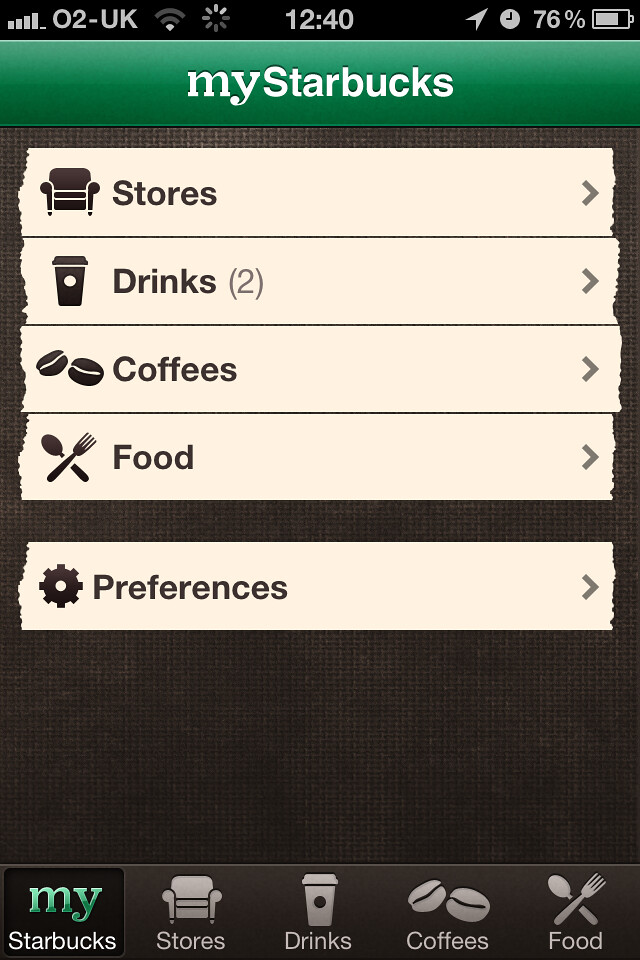Businesses today have shifted their focus on designing consumer journeys to be effortless, simple, and intuitive.
However, this may be driving their consumers away.
Ahir Gopaldas and Anton Siebert of Harvard Business Review studied consumers and their journeys with various brands across multiple industries.
They found that businesses may be acting counterproductively depending on the industry they belong to. While the approach to simplify the customer experience and make the journey “familiar” for the visitor improves the experience for some industries, it may not work for others.
Indeed, a neatly designed consumer experience works well for most industries (like e-retail). However, consumer expectations from certain other industries may be slightly different today.
Ahir and Anton identified four key types of consumer journeys and highlighted how each of these requires a slightly different approach for designing the experience that a consumer receives from it.
For example, a straightforward, familiar touchpoint for a product in the gaming industry may underwhelm the visitor instead of sparking their interest in the product.
This is because a gamer is looking for emotions related to adrenaline, excitement, and thrill when seeking out a title or an item in this category. Adding elements of surprise or thrill along the way acts as subtle triggers to keep the visitor moving forward in the pipeline.
A consumer journey is just a collective set of curated experiences that a brand has laid out for the visitor across brand touchpoints.
In the end, the aim of effective customer journey mapping is to urge the visitor to keep moving forward while keeping them engaged, interested, and delighted with the experience.
Interestingly enough, it isn’t businesses that are in the driver’s seat for heralding this change. It is the customer.
Businesses merely respond to the evolving needs of consumers in a digital era.
How Does SaaS Help?
Equipped with modern gifts of technology like Customer Relationship Management (CRM) software, businesses are putting in great effort to understand consumer sentiment and create interfaces that resonate with them similarly.
Software as a Service, or SaaS, is helping organizations mobilize their digital assets at opportune moments. SaaS is catalyzing business processes for creating customer journeys in accordance with trends and responding to customer needs with agility.
For the four distinct types of customer journeys identified today, SaaS propels business strategies with the power of technology, insight, and speed.
Types of Consumer Journeys Today
Consumers today are digitally savvy and aware of the conveniences that technology can deliver to them. As such, their expectations from a brand change every once in a while with the emergence of new technologies.
The concept of a non-linear, branched, and complex consumer journey is fairly new. Before the digital revolution, it used to be straightforward, more or less.
Businesses have now begun leveraging the boons of SaaS to harness the endless data available to them through easily deployable CRMs and use it to carefully curate targeted and high-converting customer journeys.
There exist four distinct types of customer journeys today that aim to deliver different user experiences to the visitor. Depending on the predictability of touchpoints and the effort involved in navigation and progress, these customer journeys stitch an engaging and efficient journey forward for the users.

Let’s take a look at the four types of customer journeys and how technology is helping brands create them effectively:
The “Routine”
SaaS-based CRMs help your brand save time by understanding the customer’s urgency.
Customer journeys that are designed to be repetitive are termed “routines.” These customer journeys offer the consumers an experience they can get used to to quickly accomplish the tasks at hand.
On that note, the routine customer journey is designed in a way that saves consumers time and helps them form efficient app-use “habits” that are based on familiarity with the UI and its elements.
A good example is the applications designed for banking institutions.
If you wanted to quickly create a new Fixed Deposit through your banking app, you wouldn’t want it to throw surprises your way, right?
Similarly, the Starbucks app utilizes routine-based customer journey mapping across its apps like no other. The store is aware that a large portion of its traffic consists of officegoers and that this population needs a quick trip to the café to collect their orders and leave as soon as possible.
Utilizing the power of Salesforce CRM and its peripherals, Starbucks was able to discern the cohorts of its customers and create an application that resonated with the use patterns of these people.
 [Source]
[Source]
By doing this, they were able to create a routine-based application that these users could place their order on in mere seconds as they were leaving their homes to go to work.
Utilizing the cohort and segmentation power of the SaaS-based Salesforce CRM ecosystem, Starbucks delivered an app that could be used by its customers the way they preferred instead of forcing a cookie-cutter, simplistic app on them.
The “Joyride”
CRMs help your brand align the marketing touchpoints and application experiences according to what your customers seek.
The joyride customer journey – much like it sounds – is designed to incorporate some sort of reward from the experience of using an application.
The touchpoints in this application are created to be rewarding, whether visually, aurally, or through a mix of such experiences. Familiarity, intuitiveness, and simplicity don’t work to keep the user engaged in such applications; something more is needed.
Have you ever uninstalled an application because it didn’t look interesting?
When thinking of a “joyride” journey, think of mobile-based gaming applications, like Two Dots. By mixing a collective experience of well-designed graphics, exciting animation, a great soundtrack, and an interactive interface, the developers go above and beyond in delivering the thrill that users download the app for.
In order to understand how gamers like to experience this thrill, data is of pivotal importance. Miri Growth, a marketing agency, realized this and helped Dots & Co. with audience exploration by leveraging the capabilities of Saas-based customer relationship management platforms to understand consumer needs.
The SaaS solution revealed exactly the kind of consumer journey their gamers were expecting. Two Dots was thus able to target the right users with well-designed marketing touchpoints and achieve a 21% YoY return on advertising spend.
The “Trek”
A good SaaS tool can help your business achieve customer loyalty by delivering insights into the personal goals they are trying to achieve.
Goal-based applications cannot utilize a simplistic or adrenaline-fuelled consumer journey to deliver the kind of satisfaction such users are seeking.
For example, in fitness-focused apps, an intuitive consumer journey does little to urge the user forward on the “trek” they have undertaken to achieve a goal.
On the other hand, an adrenaline-based journey may become coaxed and overwhelming. A subtly encouraging customer experience is needed for such goal-based apps, and the way this experience needs to be delivered can be understood only through consumer data.
MyFitnessPal, for example, knew that the consumers who downloaded their app were seeking a fitter lifestyle by focusing on counting calories.
Leveraging the power of their SaaS-CRM, they broke down their consumers’ journey to the goal into micro-treks consisting of smaller, more achievable milestones – a journey that kept them engaged with the app.
 [Source]
[Source]
Furthermore, MyFitnessPal leveraged the omnichannel capabilities of CRMs to engage their consumers in a channel-agnostic ecosystem.
Meaningful interactions were made possible over channels outside the app, making it easier to keep the consumers coming back to the app and logging their progress into it.
The “Odyssey”
CRMs can help your business create extraordinary consumer journeys that assist them with personal growth by helping you develop apps that become part of their daily lives.
Many industries, like strategy games or social media, give consumers an experience of growth and progress. These customer experiences are continuous without any limits to the ceiling or a fixed goal; as such, they require uniquely crafted touchpoints that resonate with the industry’s intent.
For example, Adobe Creative Cloud facilitates a progressive, growth-oriented consumer experience throughout the modules it scatters on its app.
These touchpoints are designed to encourage the user to learn more, be motivated by looking at the tracking and analysis of their performance on the app, and ultimately keep returning for better insights.
 [Source]
[Source]
While designing such apps, it is important to understand that the users would be returning to them every once in a while to track and further their progress. This makes it necessary to have handy insights that let the designers know what users are expecting upon returning to the app.
Odyssey experiences encompass long-term goals and activities that the users can build and improve over time; these users are usually seeking life improvement or learning a new skill. Simplistic, thrill-seeking, and microdetail-based approaches may not be the best experiences for them here.
CRMs: Keeping Up with the Modern Consumer
The digital revolution has created a cycle of endless possibilities for a user to get in touch with a brand and initiate conversations. The data trail that this consumer consents to is rich with their preferences and internet usage habits.
In the end, this is the data your business needs to craft exemplary consumer journeys – right from the first contact to the point of sale and beyond – and SaaS-based CRMs can help you achieve that.
CRMs are a boon to businesses focusing their efforts on improving customer experiences and overall journeys with their brand. SaaS makes it possible for businesses to access these CRM features that enable them to leverage first-hand consumer data:
- Gather all the consumer information in a single place, organize and categorize it into target cohorts, and manage target profiles easily through a single dashboard
- Conduct descriptive, predictive, and prescriptive analyses on consumer data to help you market to them better and ultimately sell better
- Create customer-centric journeys by delivering insights on consumer behavior, needs, marketing team collaboration, and analytics
In this digitally-savvy world, a business can’t afford to rely on word-of-mouth alone to woo consumers. Value needs to be delivered with every single touchpoint – and it can be done by leveraging the capabilities of a good SaaS-based CRM to create high-value, rich customer journeys.

